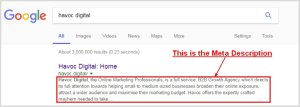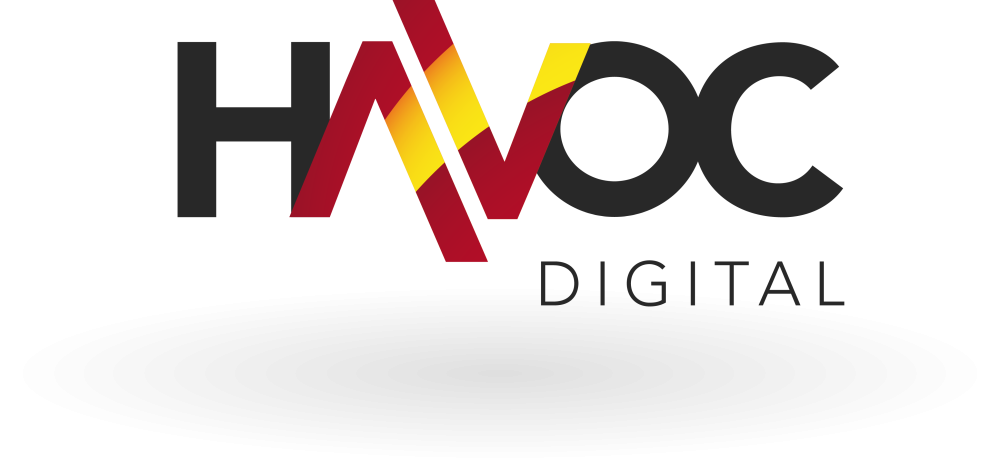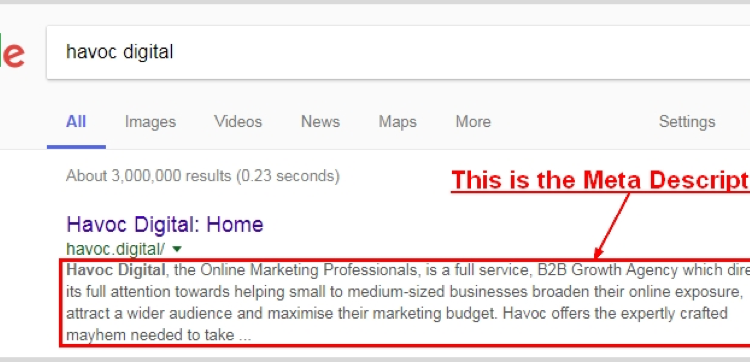The Importance of the Meta Description
[Update May 2023] Since May 2018, there have been several developments and updates in the field of SEO, including changes to Google’s algorithm and recommendations regarding meta descriptions.
Here are some key ‘Meta Description’ points to consider:
1. Length and truncation: In December 2017, Google increased the allowed length of meta descriptions from around 160 characters to approximately 320 characters.
This change was intended to provide more descriptive snippets for search results.
However, in May 2018, Google reverted back to shorter snippets, typically displaying around 155-160 characters.
It’s important to ensure that your meta descriptions remain concise and compelling within this limited character count to avoid truncation in search results.
2. Dynamic generation: Google has been increasingly generating dynamic snippets for search results based on the user’s query and the content of the webpage.
This means that in some cases, Google may choose to display a snippet that is different from the meta description you provided.
These dynamic snippets aim to provide more relevant and context-specific information to users.
3. User engagement signals: Google has been emphasising user engagement signals, such as click-through rate (CTR) and bounce rate, as factors that influence search rankings.
While meta descriptions themselves do not have a direct impact on rankings, they can influence CTR.
Writing compelling and engaging meta descriptions that accurately represent the page’s content can increase the likelihood of users clicking through to your website.
4. Mobile-first indexing: Google has been transitioning towards mobile-first indexing, where the mobile version of a website is given priority for indexing and ranking.
It’s crucial to ensure that your meta descriptions are optimised for mobile devices to provide a seamless user experience and maximise visibility in mobile search results.
5. Structured data and rich snippets: Implementing structured data markup, such as schema.org, can enhance your search results with rich snippets.
Rich snippets provide additional information in search results, such as star ratings, product prices, event dates, and more.
While not directly related to meta descriptions, rich snippets can significantly improve the visibility and click-through rates of your web pages.
6. Voice search and digital assistants: With the rise of voice search and digital assistants, search queries are becoming more conversational.
People tend to use longer and more natural language when conducting voice searches.
Optimising your meta descriptions to address these conversational queries and provide concise and relevant information can improve your chances of appearing in voice search results.
It’s worth noting that while meta descriptions are important for on-page SEO and click-through rates, they are not a direct ranking factor.
However, well-crafted meta descriptions can indirectly impact SEO by attracting more organic traffic and improving user engagement signals.
To stay up-to-date with the latest SEO developments and Google updates, it’s advisable to follow reputable industry blogs, attend SEO conferences, and regularly consult Google’s official documentation and Webmaster Central Blog.
These sources often provide insights into algorithm updates and best practices for meta descriptions and other SEO elements.
Original Article Published: May 2018
Meta Description: The word “meta” derives from Greek and means “after or beyond” and is used to describe “an abstraction behind a concept”, in simpler terms, something beyond the source thing: with regard to an SEO meta description, the sentiment is the same.
It is the extra content that appears in the search engine results page (SERP), underneath the blue clickable headline or title tag.
This extra piece of description serves the function of advertising copy, and it should be a major part of what draws your reader further into your website.
Creating a unique and persuasive description, ensuring you use your most important keywords, can improve the click-through rate (CTR) on your website, indeed that should be one of the main objectives of your meta description.
Meta descriptions no longer factor into Google’s ranking algorithms for web searches, so it is all about the clicks, and that is why you must carefully craft the words in your meta description.
The more clicks you generate the more the great Google will allow your page to rise in the ranks. This means putting effort and thought into the words used can result in a tenfold return.
Google and other search engines display keywords in bold in the meta description when they match search queries.
This makes those words stand out to the reader so it is best to match your descriptions to search terms as closely as possible.

Meta descriptions can be any length. Google actually increased the limit in December 2017 from 155 characters to 320 characters (it is actually counted in pixels, so there is no exact number because letters and numbers vary in size), but it is not the length that counts so as much as the content.
*NB the error in our Meta Description example.
Does it provide value and inspire clicks?
– That is the question an intrepid webmaster must ask themselves when creating these short paragraphs.
A page’s meta description must not be stuffed with too many keywords or be unauthentic:
It should read as naturally as possible. Yes, employ those keywords but do not make them feel like cold-calling the readers in the dead of the night.
Make it instantly applicable to the page it describes, and different from the descriptions for your other pages.
It must be compelling and alluring, inviting the searcher to click and read because that description will contain what the seeker seeks. This means extra work on creating original content but it is worth its weight in gold.
A little nugget for you when coming up with these dazzling descriptions is to make the customer the hero. Your description will support your brand’s ethos and it will match your brand’s tone, yes, but making it about the customer embarking on a journey that promises treasure, that is the gold.
It is a simple but effective use of language, where your copy will feature words such as “you” and “your”.
One example out of many is YouTube which states “enjoy the music you love.” Look at other popular sites and brands and see where the word “you” or “your” stands out.
That is their invitation to embark on the hero’s journey, to click-through.
For more information on Title Tags, Meta Descriptions, Headers etc. refer to my earlier more comprehensive articles
“24 On-Page SEO Tips for Small Business”
“Basics of Onsite SEO” – Video
Ben Miranda





